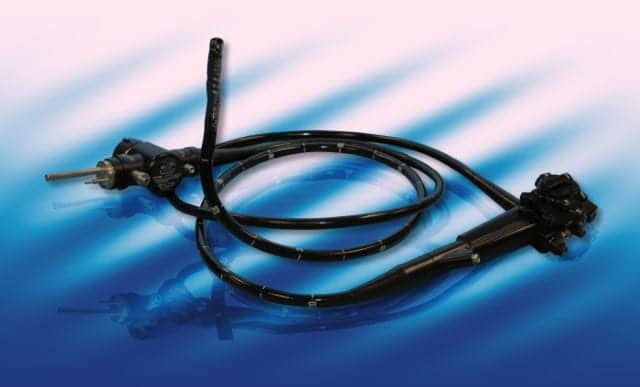The U.S. FDA is updating the April 2020 Safety Communication to provide new information supporting the transition to fully disposable duodenoscopes and those with disposable components.
Duodenoscopes are flexible, lighted tubes that are threaded through the mouth, throat, and stomach into the top of the small intestine (duodenum). Given the cleaning concerns and contamination data with fixed endcap duodenoscopes, and the increasing availability of duodenoscope models that facilitate or eliminate the need for reprocessing, hospitals and endoscopy facilities should complete transition to innovative duodenoscope designs that include disposable components such as disposable endcaps, or to fully disposable duodenoscopes.
Duodenoscopes are used during endoscopic retrograde cholangiopancreatography (ERCP), a potentially life-saving procedure to diagnose and treat problems in the pancreas and bile ducts. In the United States, duodenoscopes are used in more than 500,000 ERCP procedures each year.
The use of a removable component to facilitate cleaning leads to significantly less contamination; interim results from one duodenoscope model with a removable component show a contamination rate of just 0.5%, as compared to older duodenoscope models which had contamination rates as high as 6%. Use of the newer models of duodenoscopes can reduce the risk of infection for patients, compared to the older fixed endcap duodenoscope models.
Duodenoscope manufacturers no longer market fixed endcap duodenoscopes in the US, and fixed endcap duodenoscopes still in use at healthcare facilities should be replaced with newer duodenoscope models.
Duodenoscope Recommendations for Healthcare Providers
- Use duodenoscopes that have disposable components or are fully disposable, if available at your facility. Disposable components may lower, but not eliminate, risks of infection.
- If your facility uses fixed endcap duodenoscopes, transition to newer models of duodenoscopes that have disposable components or are fully disposable. We recommend you contact duodenoscope manufacturer(s) for information about the newer duodenoscope designs. Some duodenoscope manufacturers are offering replacement programs to upgrade fixed endcap duodenoscopes to a model with a disposable component at no-cost.
- Follow the manufacturer’s instructions for the assembly of the disposable caps and distal ends.
- Develop schedules for routine inspection and periodic maintenance in accordance with the duodenoscope manufacturer’s instructions.
- Ensure staff are meticulously following reprocessing instructions.
- Review the Recommendations for Patients and Caregivers with patients who have the affected devices.
Emerging data suggests that the best solution to reducing the risk of disease transmission by duodenoscopes is through innovative device designs that make reprocessing easier, more effective, or unnecessary.
Duodenoscopes that incorporate disposable components can facilitate cleaning, reduce contamination, and reduce disease transmission following reprocessing. Disposable designs may reduce between-patient duodenoscope contamination by half or more as compared to reusable, or fixed endcaps.





